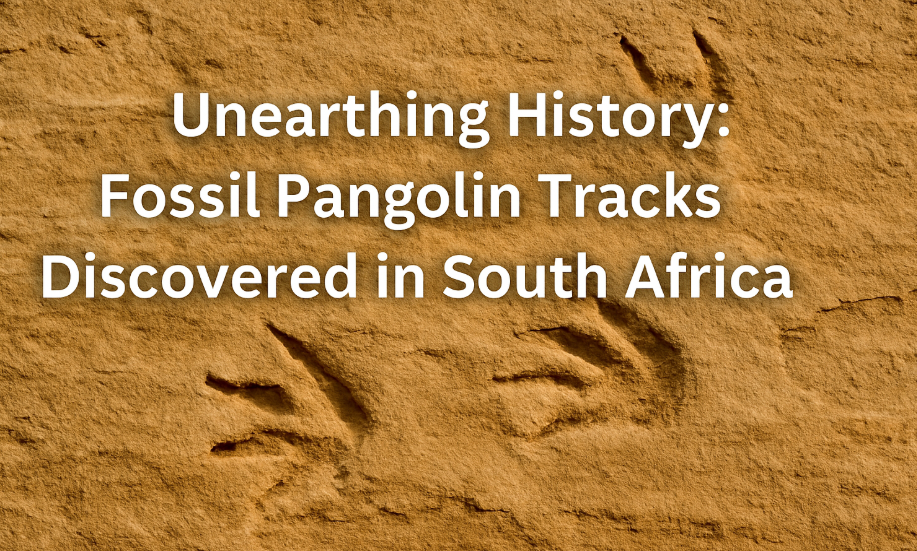In the vast timeline of Earth’s biological history, few discoveries are as profound as those that reveal the behavior and movement of ancient creatures. Recently, a team of dedicated scientists working in South Africa made a landmark discovery that adds a new chapter to our understanding of pangolins elusive, scale-covered mammals that are now among the most endangered animals on the planet.
The Discovery Site and Significance
The fossilized tracks were found in rock layers dated between 30,000 and 50,000 years ago, in a region near the west coast of South Africa’s Cape. These impressions were preserved in ancient sediment beds, allowing scientists to study not just the physical structure of pangolins but also their behavior, environment, and movement patterns.
What makes this discovery especially significant:
-
No fossilized pangolin tracks had ever been discovered before until now.
-
The tracks provide direct evidence of how pangolins moved, hunted, and interacted with their surroundings.
-
It fills a critical gap in pangolin paleontology, offering insights into evolutionary history.
Understanding Pangolins: Unique Survivors of Evolution
Pangolins are some of the most evolutionarily unique mammals alive today. They are often described as “living fossils” due to their lineage and specialized adaptations.
Here’s what sets them apart:
-
Pangolins are the only mammals covered in keratin scales, similar to human nails.
-
They walk on their hind legs, using their front claws for digging and foraging for ants and termites.
-
There are eight species four in Asia and four in Africa all facing threats from habitat destruction and illegal trade.
Despite their significance, pangolins are notoriously difficult to study due to their solitary, nocturnal nature and dwindling numbers in the wild.
Why This Discovery Matters
This fossil discovery is not just a scientific win it carries deeper implications for both biodiversity and conservation:

Reconstructing Prehistoric Ecosystems
By analyzing the fossilized tracks, scientists gain a rare opportunity to reconstruct the ancient environments where pangolins once lived, including:
-
Terrain conditions
-
Soil composition
-
Presence of other species based on overlapping trackways
Informing Conservation Strategy
Understanding how pangolins lived in the past can help conservationists develop better strategies for protecting the species today.
For example:
-
Mapping past pangolin habitats may guide restoration efforts.
-
Fossil insights can inform breeding programs by identifying preferred terrain types.
Promoting Public Awareness
This kind of discovery brings pangolins into the spotlight helping raise global awareness about their plight and the broader importance of preserving endangered species.
Connecting Past and Future: Biodiversity Through Time
In an era where global biodiversity faces immense pressure from human activity and climate change, this fossil find serves as a powerful reminder of nature’s fragility and resilience.
-
It underscores the value of South Africa’s paleontological record as a window into evolutionary history.
-
It highlights the interconnectedness of ancient and modern life, helping scientists trace adaptation patterns across millennia.
-
It opens new opportunities for public engagement, turning abstract science into tangible discovery.
The Future of Paleontological Research in Africa
Africa is often underrepresented in fossil research headlines, yet it remains one of the richest sources of ancient life on the planet. The discovery of pangolin tracks reinforces the need to:
-
Expand excavation funding and scientific infrastructure
-
Preserve fossil-rich landscapes
-
Foster international collaboration for data sharing and analysis
This discovery could act as a catalyst for future digs and conservation-focused paleontological initiatives.
Final Thoughts
From a scientific standpoint, the fossilized pangolin tracks discovered in South Africa represent an extraordinary milestone one that combines ancient animal behavior with modern conservation relevance. They serve as a bridge between the Earth’s prehistoric past and its ecological future.
As we continue to unravel the deep-time stories etched in stone, we gain not just data, but perspective on the creatures that came before us and the imperative to protect those that remain.







